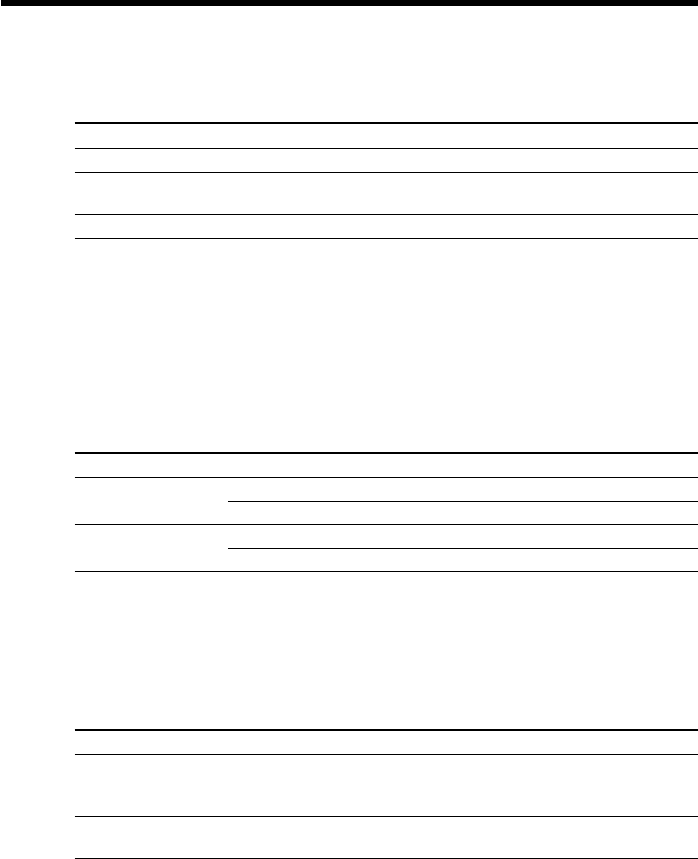
140
— Additional Information —
Compatibility of DVCAM and DV formats
DVCAM format is developed as a more reliable and higher end format than consumer
DV format. Here explained are the differences, compatibility, and limitations on editing
about DVCAM and DV formats.
Differences between DVCAM and DV formats
Item DVCAM DV
Track pitch 15 µm 10 µm
Audio sampling 12 bit: 32 kHz 12 bit: 32 kHz
frequency 16 bit: 48 kHz 16 bit: 32 kHz, 44.1 kHz, 48 kHz
Audio recording mode
1)
Lock mode Unlock mode
1)
There are two modes for audio recording, lock mode and unlock mode. In lock mode,
the sampling frequencies of audio and video are synchronized. In unlock mode, which
consumer DV format adopts, the two sampling frequencies are independent.
Therefore, lock mode is more effective than unlock mode in digital processing and
smooth transition during audio editing.
Mini DVCAM and mini DV cassettes
Both mini DVCAM and mini DV cassettes can be used on mini DVCAM or mini DV
video equipment. The recording format of picture is defined according to recorder’s
format as described below.
Recorder’s format Cassette’s format Recording format
DVCAM DVCAM DVCAM
DV DVCAM
DV DVCAM DV
DV DV
This digital camcorder complies with DVCAM format. Though mini DV cassettes can
be used for recording, we recommend you to use mini DVCAM cassettes to get the
most out of high reliability of DVCAM format. The recording time of mini DV cassettes
is 2/3 shorter than that indicated on the mini DV cassettes.
Compatibility on playback
Some tapes cannot be played back on mini DVCAM or mini DV video equipment.
Tape On DV video equipment On DVCAM video equipment
DV-formatted Can be played back Can be played back
(only when recorded in
SP mode)
DVCAM-formatted Some equipment may be Can be played back
able to play back


















